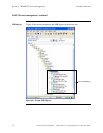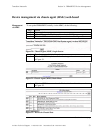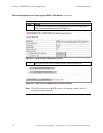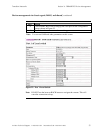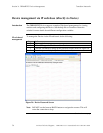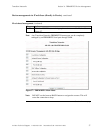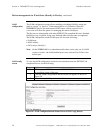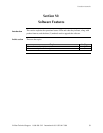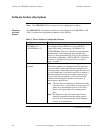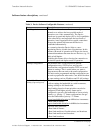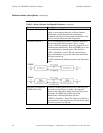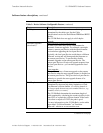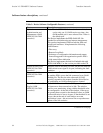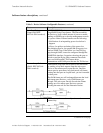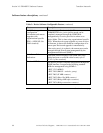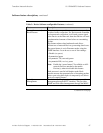
Section Vl: FBRM/BFFG Software Features Transition Networks
Software feature descriptions
Note: The FBRM/BFFG Devices does not have configuration switches.
Firmware
activated
features
The FBRM/BFFG series Devices features can be configured via USB, MMU, or IP.
Table 3 explains the configurable parameters of the Devices.
Table 3: Device Software Configurable Features
Feature Description
AutoCross When the AutoCross feature is active, it allows the use
of a straight-through (MDI) or crossover (MDI-X)
copper cable when connecting to 10/100Base-T or
10/100/1000Base-T Devices. AutoCross determines the
characteristics of the connection and configures the
Devices to link up automatically. This occurs regardless
of the cable configuration: MDI or MDI-X. (Transition
networks recommends leaving AutoCross in default
mode, “enabled.”)
(10/100Base-T or
10/100/1000Base-T)
Automatic Firmware
Upgrades
The Device has an automatic firmware upgrade feature.
This feature applies to a communication link between a
local peer and its remote peer Devices connected via a
fiber optic cable. If the remote passive peer Device is not
in Active Mode and a local active peer Device detects a
different firmware revision on its remote passive peer
Device, the local active Device will force a bootload
condition and download its firmware revision to its
remote passive peer Device.
Note The local Device could have a different firmware
revision (newer or older) than its remote peer. In
either case, the firmware revision on the local
Device will replace that of its remote passive
peer.
Note: The firmware of the local active peer Device
should be upgraded before the remote passive
peer Device to ensure that the correct firmware
version is on both Devices.
Continued on next page
60
24-Hour Technical Support: 1-800-260-1312 International: 00-1-952-941-7600



